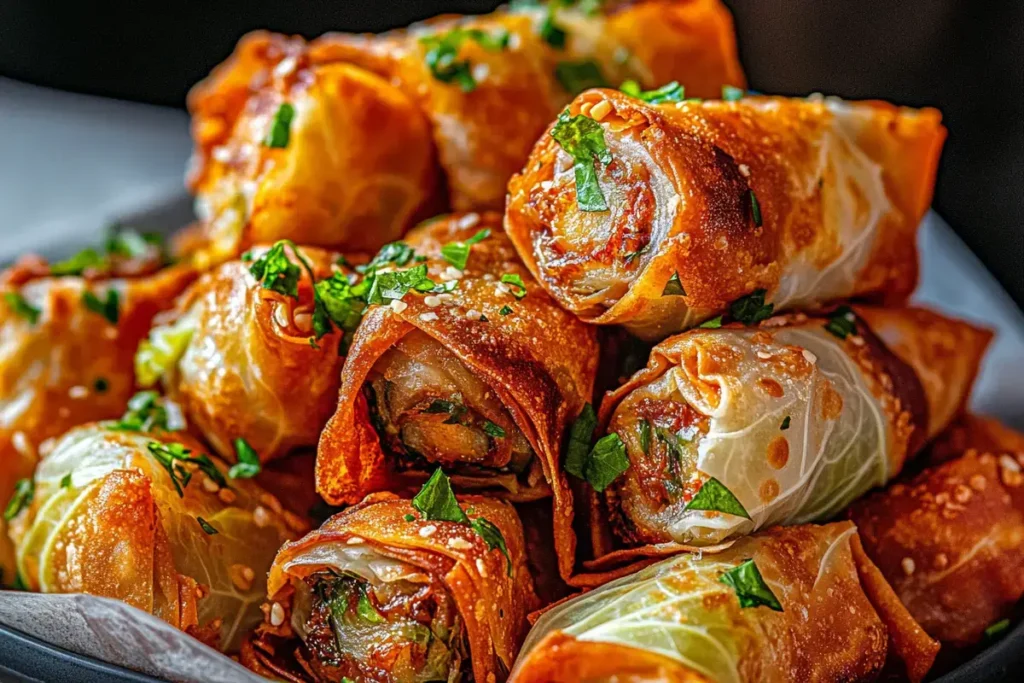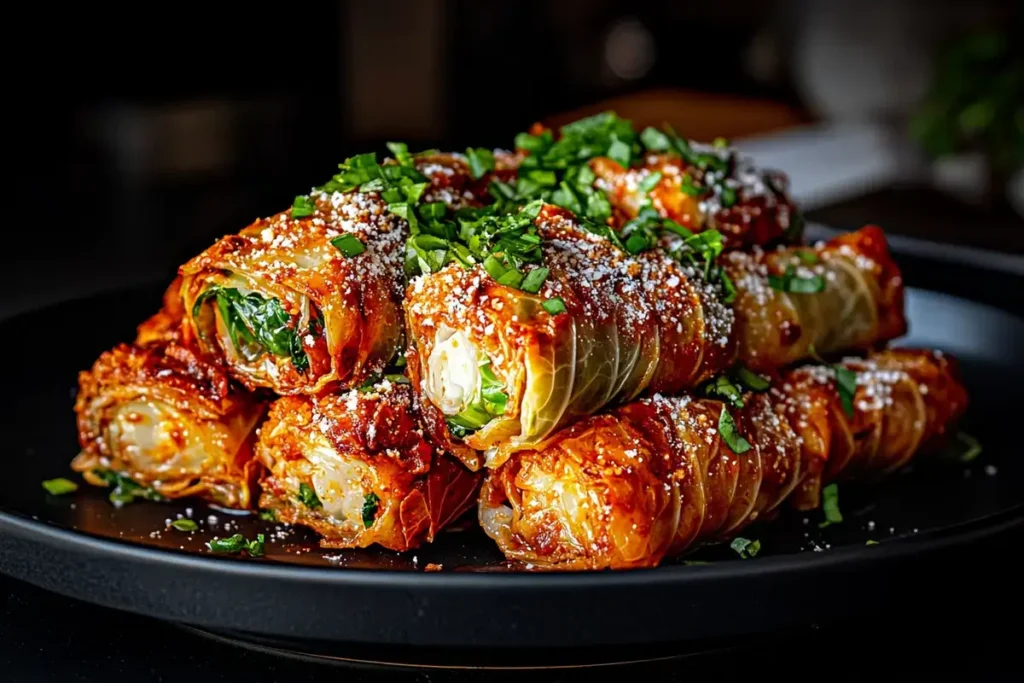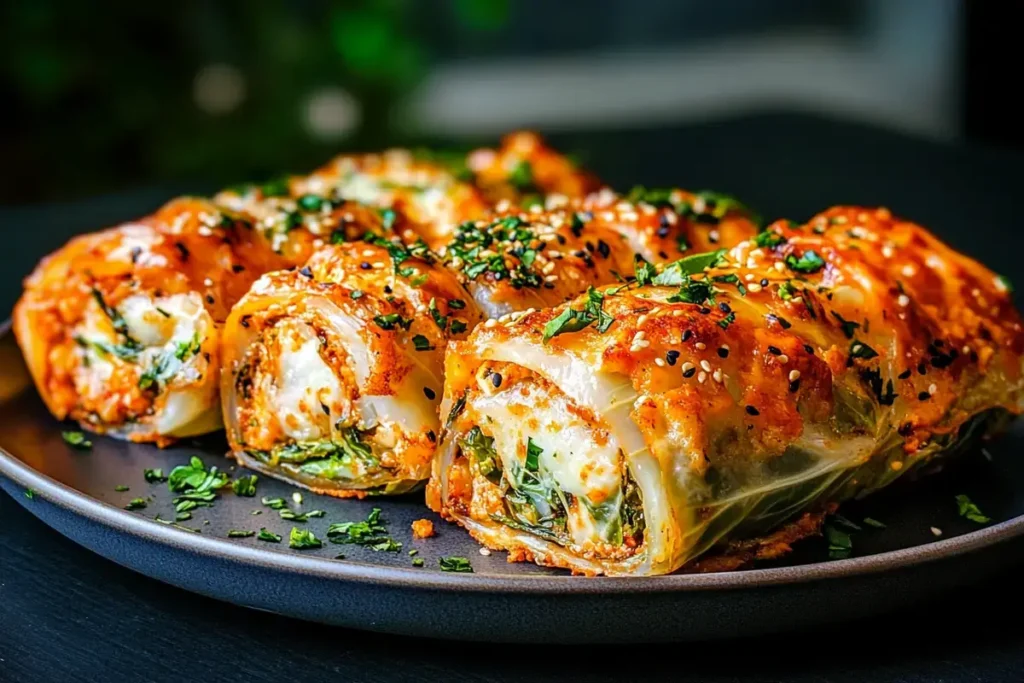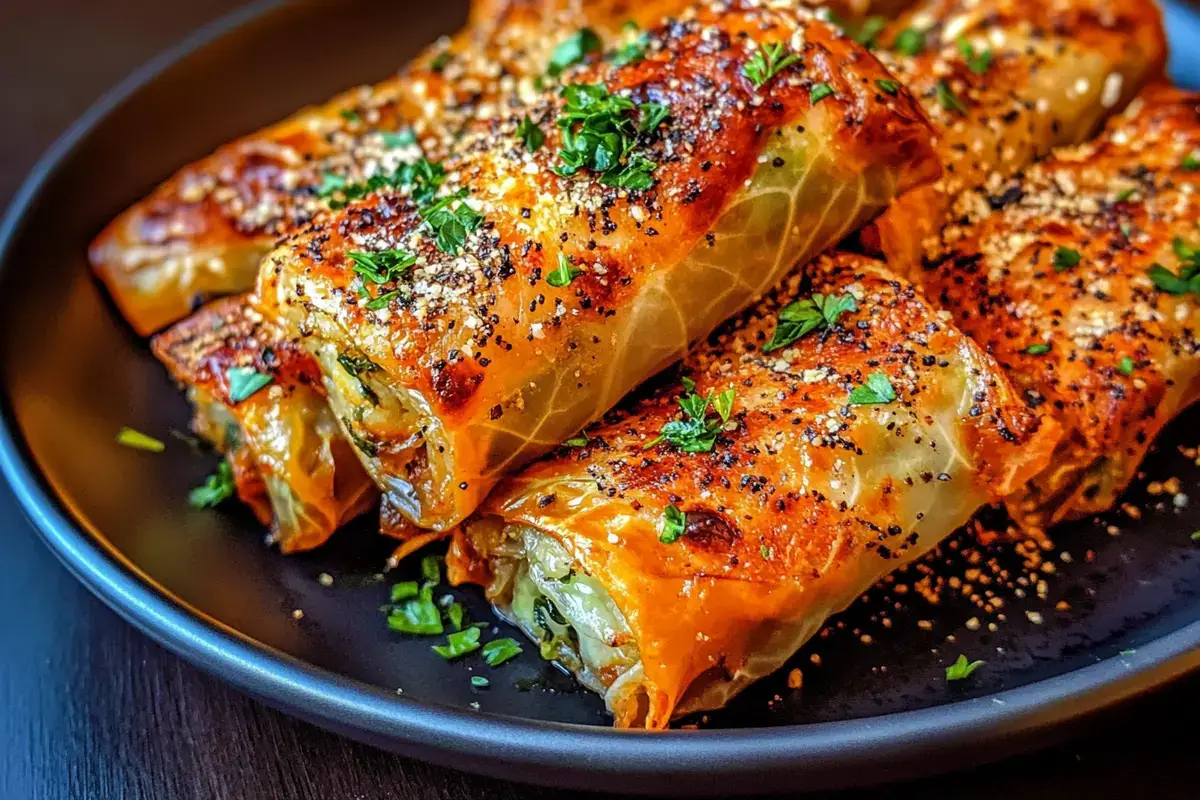As someone who’s been perfecting cabbage rolls for over years in my kitchen here in Portland, I can tell you that understanding the core ingredients is what separates a mediocre cabbage roll from an unforgettable one. Whether you call them golumpki, holubtsi, or sarma, these comfort food parcels have graced family tables across America for generations, and today I’m breaking down exactly what makes them so special.
The Essential Foundation: Cabbage Leaves
The star of any cabbage roll is, naturally, the cabbage itself. Green cabbage remains the traditional choice, particularly the flat Dutch variety that’s readily available in American grocery stores. The outer leaves should be large, pliable, and free from tears. I’ve found that heads weighing 3-4 pounds yield the best leaves for rolling.
To prepare them properly, core the cabbage and blanch the whole head in boiling salted water for 3-4 minutes. This softens the leaves just enough to make them pliable without turning them mushy. Some home cooks freeze their cabbage overnight instead the freezing process breaks down the cell walls naturally, making the leaves easier to work with once thawed.

The Heart of the Matter: Meat Filling
Traditional cabbage rolls call for ground beef, though I’ve discovered that a 50/50 blend of ground beef and pork creates a more flavorful, tender filling. The pork adds essential fat content that keeps the rolls moist during the long cooking process. For a typical batch serving 6-8 people, you’ll need about 1.5 pounds of ground meat.
Ground turkey or chicken works beautifully for lighter versions, though you’ll want to add a tablespoon of olive oil to compensate for the lower fat content. Vegetarian variations using lentils, mushrooms, or plant-based ground meat have become increasingly popular in Pacific Northwest kitchens, including mine.
The Binding Element: Rice or Grains
Uncooked long-grain white rice is the classic binder, typically using ½ to ¾ cup per pound of meat. The rice absorbs the meat juices and expands during cooking, creating that signature texture we all love. The key is using uncooked rice , it continues cooking inside the rolls, absorbing flavors from both the meat and sauce.
Brown rice, quinoa, or bulgur wheat make excellent substitutions, though cooking times may need slight adjustments. In my Ukrainian grandmother’s recipe, she sometimes used buckwheat, which adds a delightfully nutty flavor profile.
The Flavor Foundation: Aromatics and Seasonings
No cabbage roll filling is complete without finely diced onions , usually one medium onion per batch. I sauté mine until translucent before mixing with the meat, as this develops sweetness and eliminates any harsh bite.
Essential seasonings include:
- Salt and black pepper (about 1½ teaspoons salt, ½ teaspoon pepper)
- Minced garlic (2-3 cloves)
- Sweet paprika (1-2 teaspoons)
- Fresh parsley or dill (2-3 tablespoons, chopped)
- One beaten egg to bind everything together

The Sauce: Bringing It All Together
The cooking sauce transforms individual ingredients into a cohesive dish. Traditional tomato based sauce combines:
- Crushed tomatoes (28-ounce can)
- Tomato sauce (15-ounce can)
- Beef or vegetable broth (1-2 cups)
- Brown sugar or honey (1-2 tablespoons for balance)
- Worcestershire sauce or apple cider vinegar (for tang)
Some regional American variations include adding sauerkraut to the sauce or layering it between rolls, particularly in Midwest communities with strong Eastern European heritage. This adds beneficial probiotics and a pleasant acidic note that cuts through the richness.
Professional Tips for Success
Always slightly underfill your rolls , the rice expansion needs room. Place them seam-side down in your cooking vessel, and maintain a gentle simmer rather than a rolling boil to prevent unwrapping. Whether using a Dutch oven, slow cooker, or traditional roasting pan, low and slow is the key to tender, flavorful results.

FAQs
Q: Can I make cabbage rolls ahead of time?
A: Yes, assemble them up to 24 hours in advance and refrigerate before cooking.
Q: What’s the best cooking method?
A: Oven-baking at 350°F for 90 minutes or slow-cooking on low for 6-8 hours both work excellently.
Q: Can I freeze cabbage rolls?
A: Absolutely! Freeze cooked rolls for up to 3 months in an airtight container.
Q: Why do my cabbage rolls fall apart?
A: Usually from overfilling or not tucking the sides tightly enough when rolling.

